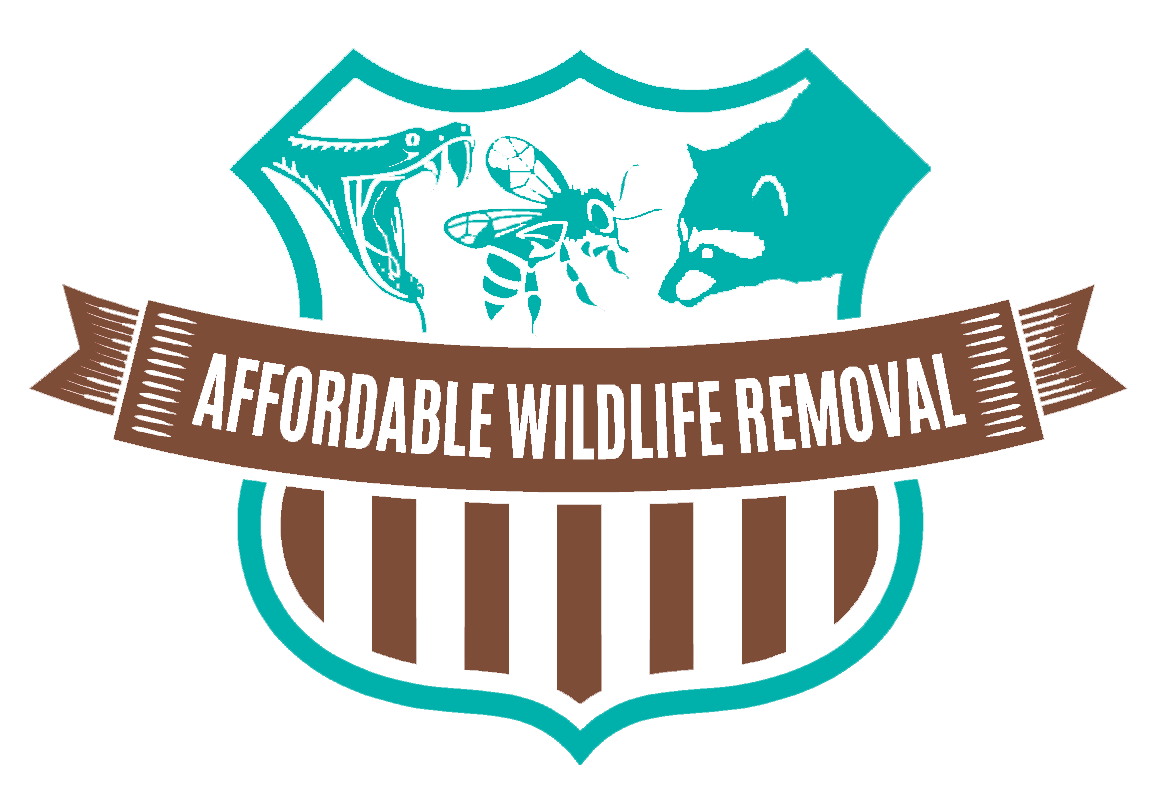Honey Bees
We believe in humanely retrieving and relocating wildlife, call now for Affordable Wildlife Removal in Orlando.
An In-depth Look At Honey Bees Around Your Home

What Are Bees?
Flying insects that gather nectar and pollen are bees, part of the Apidae family. There are many different kinds of bees, 20,000 species possibly, and there are many variations between them.
Some make honey and some don’t. Some are able to sting, while others are not. One of the oldest living species is bees. Bees pollinate around 1/3 of all crops Sources 1NASA | Bee Facts Go to source consumed in the United States, in addition to supplying humans with beeswax and honey. However, homeowners find their existence irritating since the pests often create nests in houses, barns, and sheds.
What Do Bees Look Like?
Honey bees typically measure about 15 mm long and are light brown in color. Honey bees are typically oval-shaped creatures with golden-yellow colors and brown bands. The body color of honey bees varies in between species and some honey bees have predominantly black bodies, practically all honey bees have varying dark-to-light striations.
These light and dark stripes serve a purpose for the survival of the honey bee: unlike other species that hide when they pick up on predators close by, the vibrantly colored bodies of the honey bee act as a cautioning to predators of the honey bees’ capability to sting.
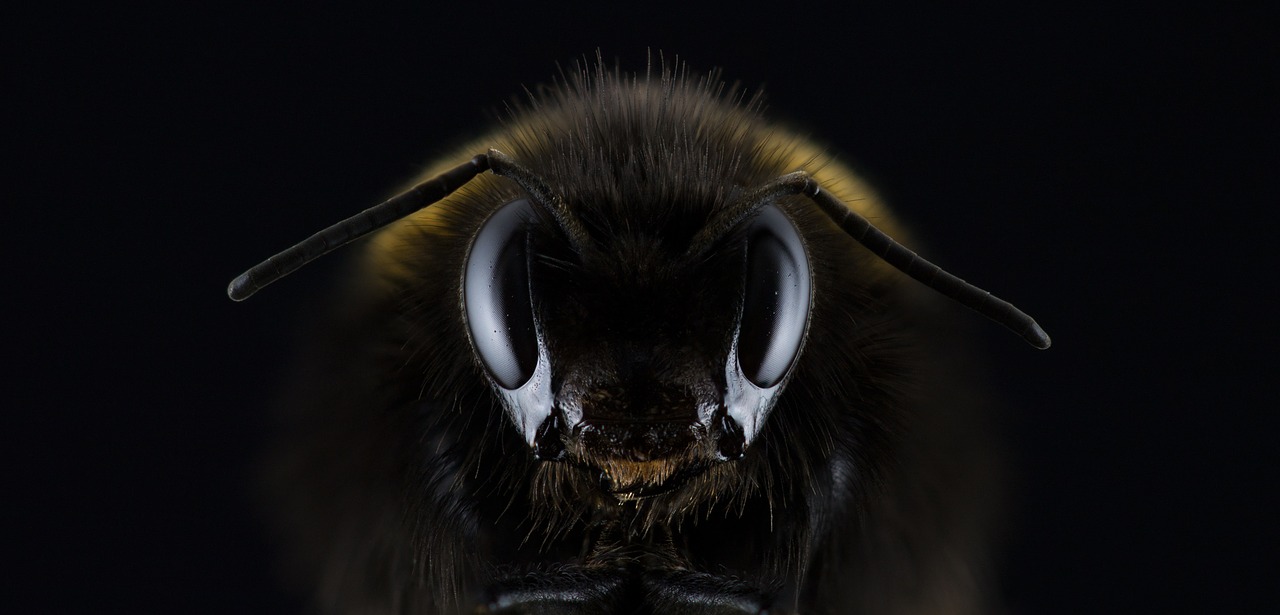
Bees anatomies are a unique to the species and allow them to adapt to most environments they find themselves in. The body of the honey bee is divided into 3 sections– the head, the thorax and the abdominal area. Each section serves its own purpose and supports the functions of the attached body parts.2Source Perfect Bee Go to source
The Head
The head of the bee contains the main source of feeling for bees, the antenna. The antenna on the head of the honey bee forms a sensory power home, providing a function for a bee’s sense of touch, odor, taste and even an unique type of hearing. Antenna also include smell receptors, though they are not the only part of a bee’s anatomy that can discover smells. 3Source American Bee Journal Go to source
The Thorax
The thorax of the honeybee is a bee’s stomach and is mainly concentrated on mobility. The thorax features six legs and 2 pairs of wings. The muscles in the thorax permit the bee to control the motion of the wings during flight. The quick contractions of the muscles produce the quicksilver movement of the wings.
The speed of a flying bee typically falls between 15 and 20 MPH. These wings are arranged in 2 pairs, connected by a row of hooks on the back wing. 4Source Bee Health Go to source
The Abdomen
In queen bees, the abdominal area includes the spermatheca, which is utilized to save sperm gathered during her breeding flights and when laying, as she fertilizes eggs. The ovaries of the queen will mature and begin producing eggs in between the age of 1-2 weeks and she will continue to lay eggs till her death.
Another key element of a bee’s anatomy is the stinger. Of all components of the anatomy of a bee, the stinger is the one that the layperson thinks about because removing a bee stinger can be painful! The stinger is the honey bee’s one true line of defense. Honey bees will sting just as a last resort when threatened since when they have actually utilized their stinger they normally pass away. 5Source Bee Health Go to source
What Is The Typical Habitat Of A Bee?
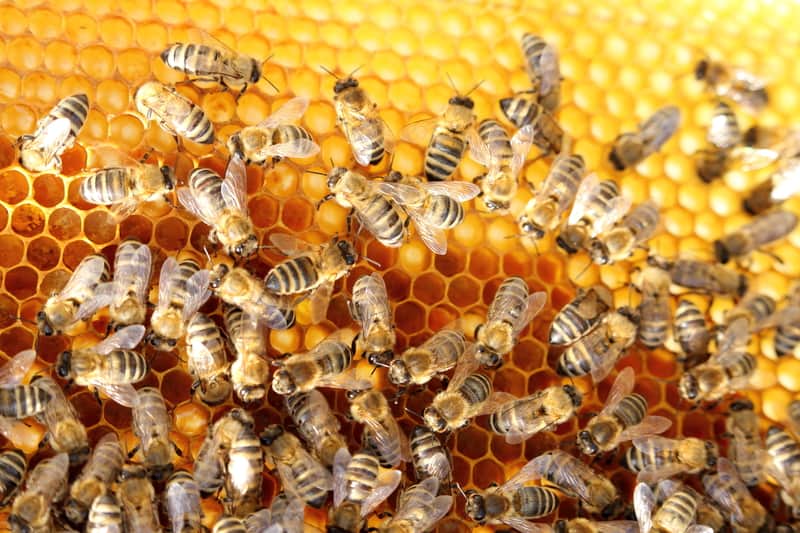
These insects need environments with plenty of nearby feeding potential, including flowering plants. In natural environments, agricultural areas, and urban parks or gardens, they may live. Orchards, meadows, parks, woodlands, and practically anywhere with plenty of flowers growing are their favorite habitats.
Honey bees are also able to live in cold climates and, by huddling inside the nest, thermo-regulate. To raise the temperature inside the hive, the bees actually shiver.
What Do They Eat?
A substantial portion of honeybee diet plans include pollen and nectar, which they continue to gather and store. Pollen is fermented into bee bread, which supplies protein within the hive whereas nectar is utilized for honey production, which is abundant in carbs.
This is achieved through repeated storage, evaporation, and fermentation. Pollen and nectar are acquired from neighboring flowers and plants, thus making it vital for a colony to be established near an abundance of flowers. 6Source Buzz About Bees Go to source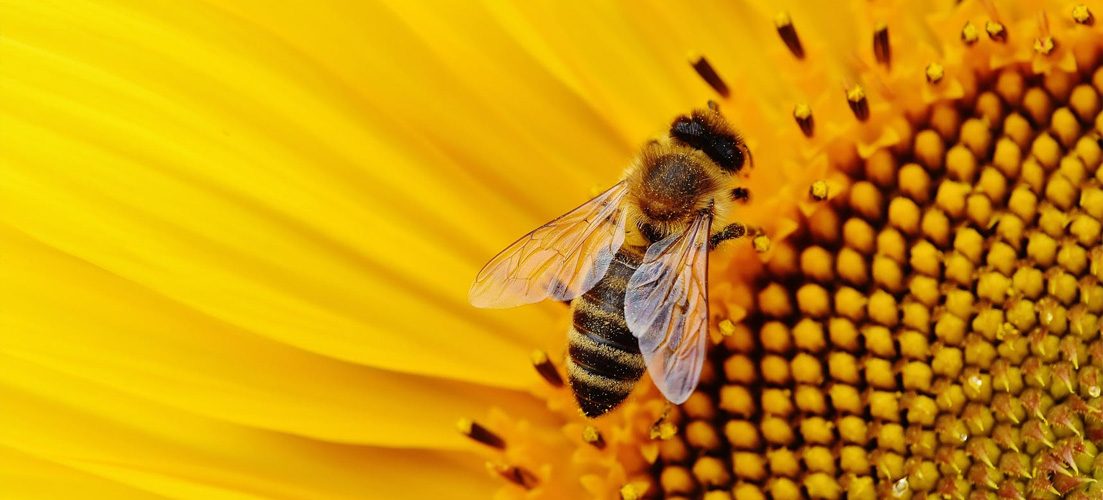
Pollen is a fine powder comprised of microspores produced by male plants. Bees will fly plant to plant seeking nectar/pollen and can be help the plant bloom by bringing pollen to female plants. Nectar on the other hand is sugary fluid produced by plants, especially within flowers to encourage pollination by bees. The bees also collect nectar to make into honey. 7Source NC State University Go to source
Can Bees Survive In Cold Climates?
The majority of bees and wasps do hibernate throughout the winter season, honey bees can survive cold winters. In the insect world, there are numerous strategies that insects, like bees, can utilize to make it through winter season, that include hibernation and diapause. 8Source University Of Delaware Go to sourceIn some bee types, just the queen survives, reemerging in the spring from a protected area to develop and establish a brand-new colony for the summer. Honey bees stay active throughout the winter, regardless of freezing temperature levels and the absence of flowers on which to forage. These honey bee species ride out the winter season by producing their own heat source. 9Source US National Library of Medicine Go to source
Where Did Bees Come From?

Bees evolved from ancient predatory wasps that lived 120 million years back. Like bees, these wasps built and defended their nests, and collected food for their offspring. However while a lot of bees feed on flowers, their wasp forefathers were carnivorous. They stung and incapacitated other pests, bringing them back to feed their developing offspring in the nest. Much of what we know about the fossil record of bees originates from specimens that are preserved in amber, a semi-precious gems that is really fossilized tree resin. 10Source University Of Maryland Go to sourceThe honeybees we know and enjoy in the United States are an introduced species. Their journey across the continent mainly followed European settlement. European settlers brought honeybee hives to Virginia in 1622. By 1639 colonies of honey bees were discovered throughout the woods in Massachusetts. 11Source Science Daily Go to source
How Do Bees Gain Entry Into The Home?

When bees are up against a window in the house, it is common to assume that bees have entered through an open window or door. What is more likely to have occurred is that a bee colony has moved in, or a new home is being set up by scout bees. Bees may get lost when examining the structure of a building or home, and end up inside the home.
The chimney or the side of the chimney, vents, roof eaves, siding, and column support are common places where bees and wasps build nests. There may also be bee behavior in the house if a beehive has already moved into the structure of a building or house.
Bees can enter through a space that is just 1/8 of an inch and they like to nest in the bigger areas that lie behind these little holes. Identifying cracks around the home will give you an idea of how the bees are entering or provide an opportunity for the homeowner to prevent entry by sealing the cracks.
Can Bees Cause Property Damage?
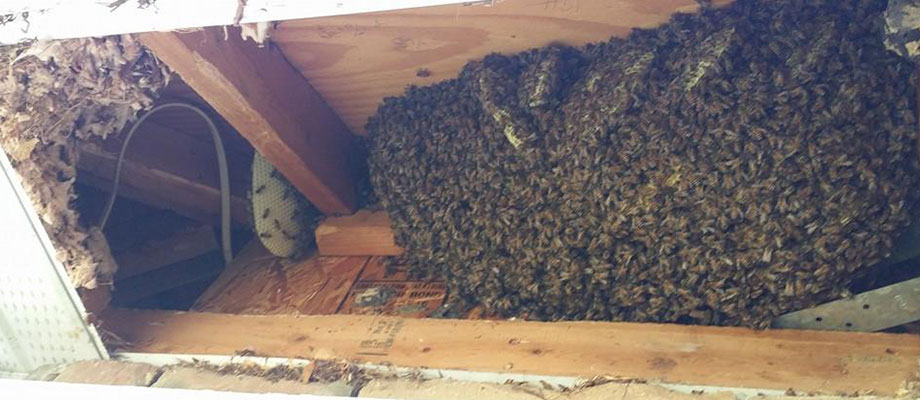
The most common damage brought on by bees is not from the bees themselves but from the wax and honey. Honey is a great attractor of other creatures such as small rodents and other pests. Those kinds of pests will cause their own sort of damage when attempting to get to the hive.
When bees desert a hive or start spreading to other areas, the honey left behind is likely to drip and even ferment. Home owners will initially observe a strange smell coming from the area, and after that a matching stain on the walls or ceilings. That is a sure sign that honey has made its escape of the hive and into your structure.
The mere weight of a large colony of bees will harm your home’s structural elements, such as walls, chimneys and roofs. As hives grow, pressure will force honey, melting wax, and waste through walls, leaving painted and wallpapered surfaces with harmful stains.
Honey Bee Trapping & Removal

The already diminishing numbers of bees around the world are threatening potential farming, so attempts should be made to prevent or relocate them rather than kill their hives. Wildlife experts can get rid of an existing colony and all of its components (bees, comb, brood, honey) and transfer it safely to another location.
Swarms, given their short-term state and docile nature, generally can be eliminated quickly and be relocated. For safe and successful prevention and removal of bees, contact Affordable Wildlife removal services. Our expert technicians can completely eliminate the bee threat while safely relocating the hive.
Summary: Bees are a common insect to see around large populations of plants and flowers. They’re branded with black and yellow stripes and pollinate 1/3 of the United States’ crops. These insects are branded with black and yellow stripes. A bee’s anatomy is built with the purpose to gather pollen and nectar. A bee has antennas for touch, wings to fly quickly, and a stinger for last resort protection.
Bees eat by extracting nectar from plants and it’s believed that bees were brought to America by European settlers in the 1600s. Bees establish hives in areas safe from predators and near pollen sources (often near residential homes). Bee colonies will damage home due to the weight of the colony and the excess wax/honey that seeps in the walls of a structure. Homes are often over ran with bee colonies and require professional wildlife experts to relocate the colony.
